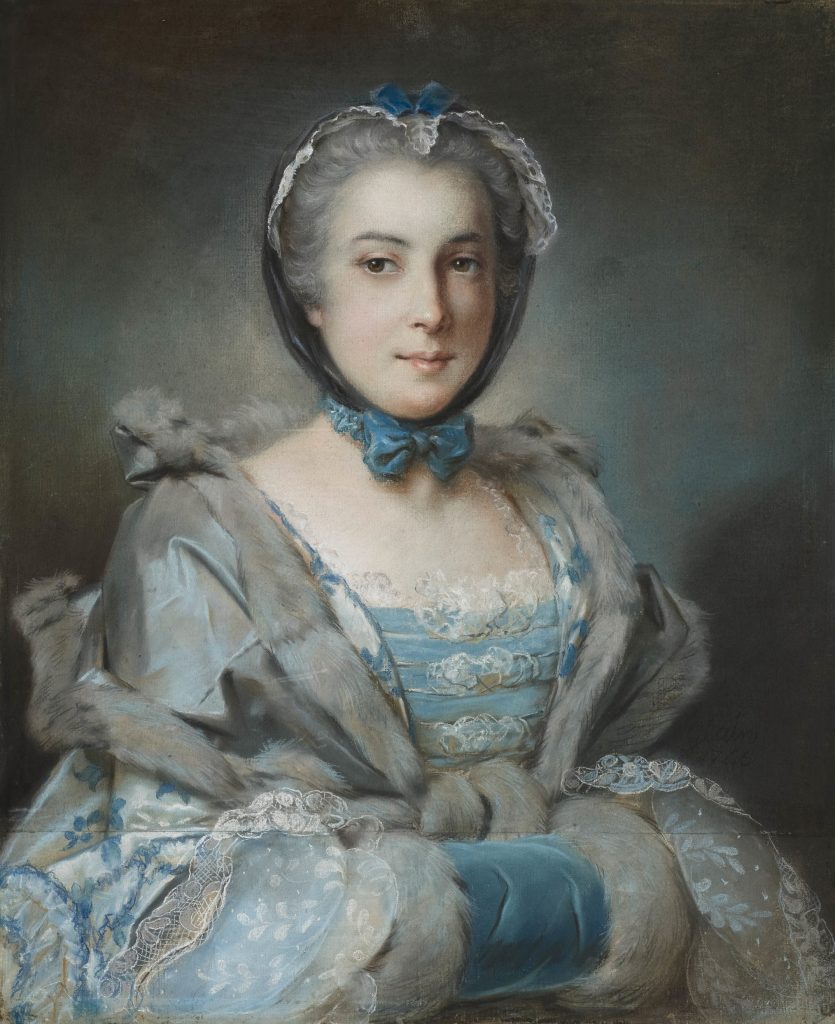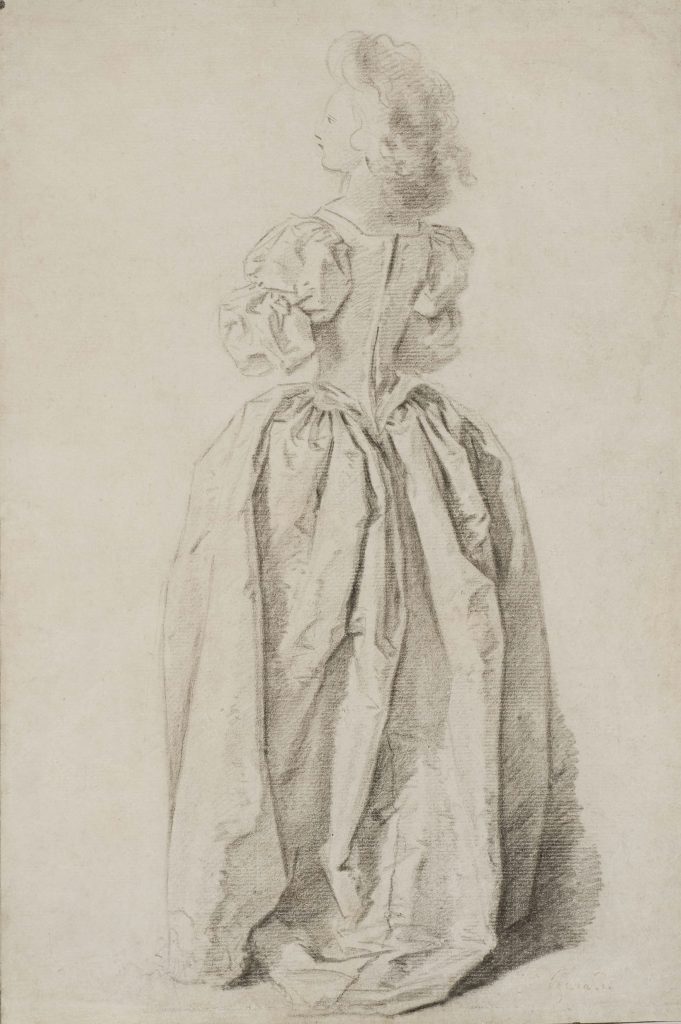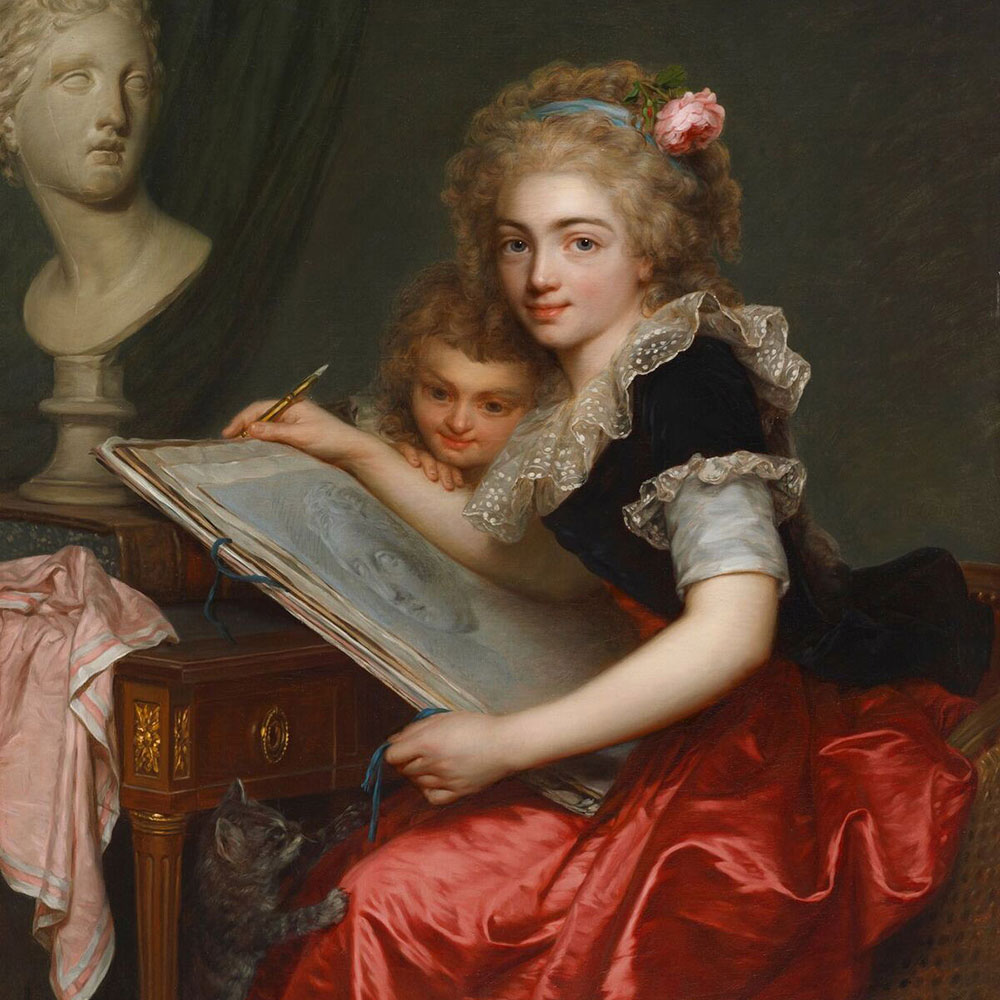
By: Franny Brock, Ackland Graduate Intern 2017-18, Ackland Art Museum
As a specialist of eighteenth-century French art, my job has been particularly exciting and rewarding this semester because of the Ackland’s new exhibition, Becoming a Woman in the Age of Enlightenment: French Art from the Horvitz Collection. This installation epitomizes so many of my research interests, including the work of women artists, collectors and collecting, drawing techniques, amateurism, and display of works on paper. Some of my favorite pieces in the exhibition—the ones that I keep returning to over and over again—are the pastel portraits. The velvety texture and rich colors of these works drew me in immediately, but their contradictory classification and contested status in the eighteenth century keeps me coming back for more.
From a curatorial perspective, chalk pastel is fascinating because it occupies a place somewhere between painting and drawing. In the eighteenth century, pastels were considered a form of painting, comparable to oil. In 1701, Joseph Vivien (1657–1734) was the first artist accepted to the French Académie as a “painter in pastel.” The vibrant colors, high degree of finish, and size of pastels make them similar to paintings. However, works in pastel are done on paper and are extremely fragile. Like drawings, pastels are light sensitive and need to be stored in the dark most of the time (which makes it even more thrilling that we have eight on view at the Ackland right now). Anyone who has worked with chalk pastels knows that keeping the medium adhered to the paper is also a problem. Pastel is crumbly and dusty; it wants to lift off its support, especially when moved or jostled. Many strategies for fixing pastel to paper were invented in the eighteenth century.
Chalk pastel is made of powdered pigment and a binder, such as gum arabic, then formed into sticks. These pastel sticks can be applied directly to paper as a dry medium or mixed with water and applied with a brush. Pastel became popular in eighteenth-century France, especially for portraiture, because of its ability to mimic the tones and texture of skin, hair, and clothing. Gault de Saint-Germain’s Portrait of a Boy demonstrates how different colors of pastel were blended or “stumped” (sometimes also called “sweetened”) to create the luminous skin of the young man’s face. The powdery surface of this work reflects diffuse light off the facets of tiny particles of pigment, creating a sense of white light and a velvety texture.
Although both men and women artists used pastel, the medium came to be considered “feminine” because it relied on surface attributes such as color and shading, rather than the more masculine-associated line and structure, to define subject matter. Social critics also linked pastel to women’s cosmetics because of its physical similarity to powered rouge. While there was wide popular appeal for pastels in eighteenth-century France, this comparison emphasized the perceived artificiality and delicacy of the medium in the minds of its critics.
The pastel works in Becoming a Woman in the Age of Enlightenment show a range of techniques, including blending and the use of mixed media, and because they were never varnished, these pieces have retained their original brilliance. I encourage you to take the opportunity to view these pastels before they return to the dark to rest.
Léon-Pascal de Glain, French, 1715-1775, Young Woman in a Blue Dress with Muff, 1745, pastel on parchment laid down on canvas, 676 x 572 mm. The Horvitz Collection.


